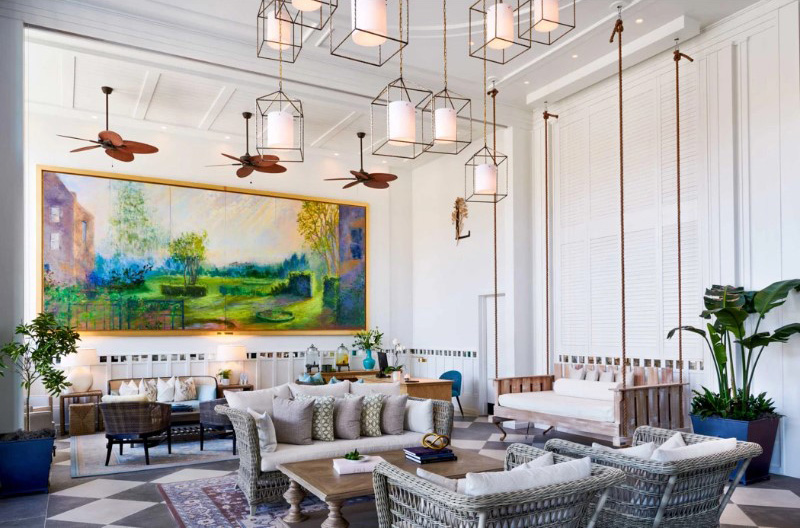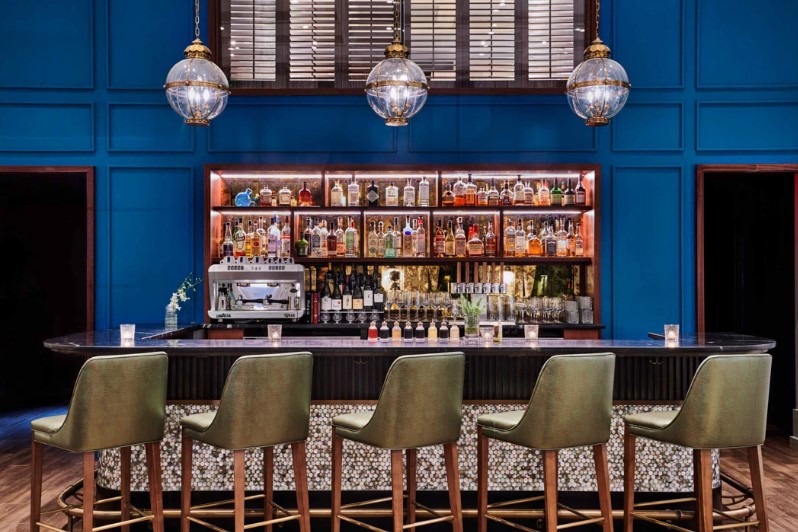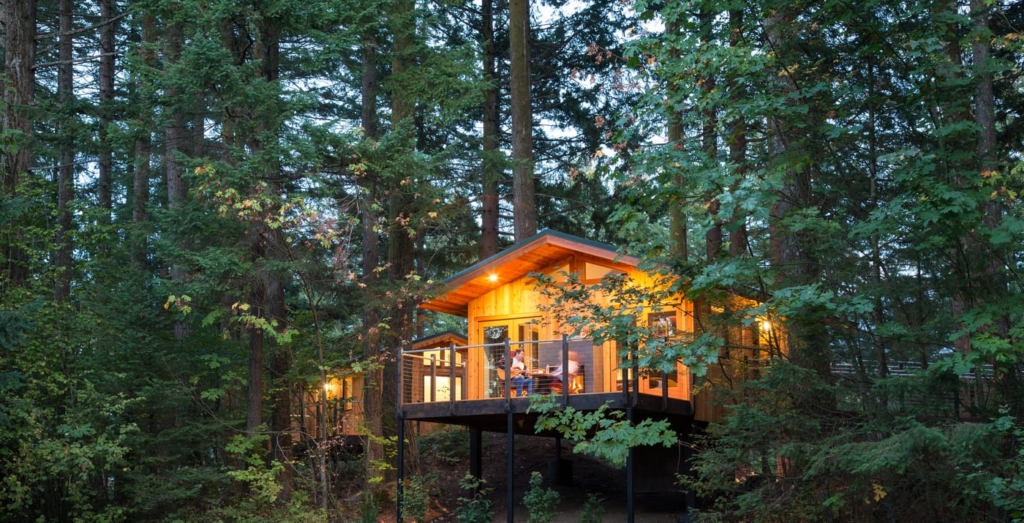With deep expertise in hospitality design—ranging from boutique hotels to luxury resorts—Patrick Kruger, Hospitality Practice Leader at WDA, brings a guest-centered lens and a refined design sensibility to every project. His experience in high-end residential work adds a personal, human scale to his approach, making him a natural fit for WDA’s growing hospitality practice. Based in Seattle, Patrick is also helping expand WDA’s West Coast reach, bringing fresh perspective and regional insight. In this hospitality design leadership interview, we sat down with him to talk about place, experience, and the architecture of welcome.
Your background includes a strong focus on hospitality—from boutique hotels to resorts—alongside experience in high-end residential design. How do those worlds influence one another in your approach to guest experience?
The essence of hospitality design lies in creating spaces that transcend the ordinary and celebrate the extraordinary. Whether it’s a boutique hotel, resort or high-end residence. These places aren’t just functional—they’re immersive environments that evoke emotion, reflect individuality, and elevate the experience for everyone who enters, whether it’s the homeowner or the guest. The challenge is weaving together the intimate details that make a home personal with the grandeur and scale expected of a destination property—all while keeping the occupant’s experience front and center.
What early conversations with a client tend to shape the direction of a successful project?
When designing a space, the foundation is built on a deep understanding and validation of the client’s desires. Before any creative endeavor begins, it’s essential to have conversations that uncover what truly matters to your client. This initial phase is about listening intently and ensuring that all ideas, ambitions, and even hesitations are acknowledged. By doing so, you create a fertile ground for a collaborative process where the client’s vision becomes the guiding star for the design.
Once you have a clear sense of these desires, it’s crucial to level-set expectations. This involves more than just mapping out a design concept—it requires transparent discussions about practical elements such as budget, timelines, and feasibility. Establishing realistic parameters early on not only aligns everyone involved but also paves the way for creativity within well-defined limits. By openly setting these expectations, the team can avoid misunderstandings and cultivate trust, ensuring that the design process is as joyous as it is strategic.
Design should be a fun and engaging experience for all parties involved. When you’re sitting down with your client, their team, and your creative staff, every honest conversation marks the beginning of a shared journey. This dialogue transforms the abstract ideas into tangible plans, creating an environment where creativity meets practicality. It’s during these interactions—before pen touches paper—that the real magic happens. Each discussion, each idea exchange, and each clarification contributes to a design narrative that is both robust and responsive to the client’s needs.
By embracing clear and honest communication from the outset, every stakeholder enters the process with confidence. Not only is there a mutual understanding of the project’s scope and limitations, but there’s also an acknowledgment of the shared excitement and commitment to bringing the vision to life. This approach transforms design from a series of tasks into a holistic, gratifying journey—one where every step of the process is infused with purpose and a sense of possibility.

How does place influence your approach to hospitality design—especially working across cities like Seattle, San Francisco, and overseas?
Traveling allows us to experience the untranslatable—the sights, sounds, and sensations unique to a specific location. These are the treasures we seek, moments that cannot simply be packaged and transported elsewhere. In the realm of design, this philosophy holds true. Authentic design, much like travel, serves as a bridge to connect people to the essence of a place. It must never overshadow or compete with the setting; instead, it should quietly complement and celebrate its distinctiveness.
The reason for the design lies inherently in the location itself. It answers a call from the environment, responding to its character, history, and energy. Genuine design starts with a deep understanding of the surroundings—the topography, the climate, the cultural tapestry—and seeks to enhance rather than alter. It is not about imposing a vision but amplifying the voice of the site, allowing the location to shine as the protagonist in the narrative.
For instance, in hospitality design, every choice reflects this commitment to authenticity. From the materials sourced locally to the architectural lines inspired by nature’s forms, each element echoes the site’s personality. Whether it’s a retreat nestled among coastal cliffs or a boutique hotel in the heart of a bustling city, the design becomes an extension of the landscape, welcoming visitors into an experience that feels both seamless and extraordinary.
This approach honors the inherent beauty of the journey. A design that complements its location enables guests to feel truly connected to the environment—whether it’s the warmth of a desert breeze gently guiding them through open corridors or the tranquil hush of a forest surrounding a cozy lodge. It’s these sensory details, these moments of harmony between architecture and place, that create unforgettable experiences.
At its core, designing with this ethos ensures that the space has purpose—not merely as a functional shelter but as an organic part of the destination’s identity. It’s about curating an experience so genuine that guests leave with an enriched understanding of the location’s story, taking home memories that cannot be replicated elsewhere.

What’s one aspect of guest experience design that you think deserves more attention?
Designing for simplicity and ease of use. The guest experience should feel seamless and intuitive, where everything flows naturally without needing instructions or guidance. This approach creates a sense of comfort and care—a hallmark of excellent hospitality design.
Emphasizing simplicity doesn’t mean sacrificing innovation or luxury. Rather, it offers an opportunity to refine experiences to their essence, ensuring they’re elegant, functional, and memorable.
When simplicity becomes a design priority, it reflects a deep understanding of the human experience. It’s about anticipating needs and offering solutions that feel effortless.
WDA is known for thoughtful materiality and attention to detail. How do you help translate a client’s brand or vision into spatial experiences that feel layered and personal?
Translating a client’s brand or vision into a spatial experience requires a deep dive into their story, values, and identity. It’s about creating spaces that resonate with their essence and make a personal connection with the end-users.
You must begin by fully immersing yourself in the client’s brand, mission, and culture. This could involve workshops, interviews, or even firsthand experiences with their products or services. Understanding their goals and narrative provides the foundation for authentic design.
Infuse the space with elements that tell the client’s story. This could mean weaving local context, traditions, or materials into the design to ground the space in its surroundings.
Layer in sensory details like lighting, textures, or scents that evoke emotions tied to the client’s vision.
Incorporate thoughtful details that reflect the client’s personality. For example, bespoke furniture, curated art, or tailored finishes can add layers of richness and individuality to the space.
Foster an open, collaborative process with the client, ensuring their input shapes and evolves the design.
Finally, layer in elements of surprise, comfort, and delight that connect with the end-user on a personal level. Consider how every touchpoint—from the arrival to the smallest detail in a guest room—can contribute to a cohesive and memorable experience.

What excites you most about leading William Duff Architect’s hospitality practice at this moment of growth?
My passion for architecture aligns perfectly with WDA’s commitment to both high-end design and exceptional service. Leveraging the firm’s design expertise alongside its people-first approach is a powerful combination—particularly in hospitality, where guest experiences are deeply intertwined with thoughtful design and authentic connections.
I believe my focus on the principles of—simplicity, authenticity, and guest-centered experiences—positions WDA for a seamless transition into hospitality. It’s an industry where storytelling and sensory experiences can truly shine, creating spaces that not only complement their surroundings but also evoke a sense of place and purpose.

__
As WDA expands its hospitality portfolio, Patrick Kruger’s thoughtful, guest-centered approach is helping shape spaces that are both regionally grounded and universally welcoming. We’re excited to see how his leadership continues to influence the practice and inspire future collaborations. Thank you for joining us for this hospitality design leadership interview—a conversation rooted in purpose, place, and the power of design.
